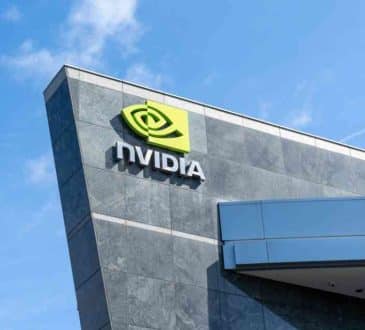Why It’s Important to Get Metrics Right for Hybrid and Remote Work

How do you measure hybrid and remote work effectiveness? Doing so represents one of the biggest challenges in flexible work contexts, since without the right metrics, how can you be confident your work model is actually working? In a fascinating interview with Vahagn Sargsyan, Founder of WebWork, a revealing picture emerged about the critical role of metrics in remote work environments.
The Evolution of Remote Work Metrics
Vahagn Sargsyan’s journey into the world of remote work metrics began well before the recent surge in remote work practices. His company initially specialized in software development services, where time was the primary commodity. This focus on time led to the creation of WebWork Time Tracker, a tool designed to optimize time management and invoicing for remote work.
The core of WebWork’s functionality lies in its ability to track time and manage workflows. This feature is particularly beneficial for remote and hybrid teams, providing comprehensive dashboards and reports to facilitate data-driven productivity improvements. The tool encompasses everything from time tracking to workflow organization, making it a one-stop solution for remote work management.
Employee-Centric Approach
A unique aspect of WebWork is its employee-centric approach. The tool prioritizes providing deep insights and data to employees, aligning with the vision that modern employees should be more autonomous and have access to vital business metrics. This approach not only empowers employees but also addresses work-life balance issues by detecting burnout risks and encouraging breaks.
In the realm of hybrid and remote work, there’s a thin line between monitoring and surveillance. Sargsyan emphasizes the difference between these concepts. WebWork’s focus is not on surveillance but on providing useful metrics that can be calculated without infringing on privacy. The platform is highly configurable, allowing insights to be visible only to the concerned individual, thereby respecting employee privacy and autonomy.
Setting Metrics
Setting metrics for remote work is not a one-sided affair. It requires a continuous and strategic approach, starting from a broader understanding of the company’s goals down to the individual contributions of each team member. Sargsyan advocates for a collaborative process where both employees and managers play a role in determining the most relevant and effective metrics.
A key point raised by Sargsyan is the importance of balancing input and output metrics. He highlights the fallacy of relying on a single metric to measure productivity. Instead, he suggests a multifaceted approach, considering various factors like the time taken to complete tasks, the quality of work produced, and the significance of the tasks completed. This approach offers a more comprehensive and fair assessment of employee performance.
Looking ahead, Sargsyan sees significant potential in the integration of AI in metric measurement. AI can analyze vast amounts of data, providing insights that can drive more informed decisions. The future of work, according to him, will rely heavily on asynchronous processes and AI’s ability to process and interpret complex data sets, leading to more efficient and effective remote work environments.
The Role of Expert Consulting in Defining Remote Work Metrics
When I work with clients to help them establish their flexible work models, a critical part of the conversation always revolves around metrics. It’s a challenging area, often fraught with uncertainty as clients grapple with determining the most effective ways to measure remote work productivity and effectiveness. That’s why the conversation with Sargsyan proved so helpful – I will refer clients to it time and again to help them understand the variety of considerations involved.
So what does a typical client conversation involve? First and foremost, I assist clients in identifying the metrics that truly matter – those that align with their specific business goals and the unique dynamics of their remote or hybrid teams and avoid bias. This tailored approach ensures that the metrics are not just generic indicators, but meaningful measures that drive performance and growth.
Additionally, my guidance helps clients balance the needs and concerns of both the organization and its employees. By advocating for an employee-centric approach, I help clients develop metrics that not only track productivity but also support employee well-being and autonomy. This leads to a more harmonious and sustainable remote work environment, where employees feel valued and engaged.
Moreover, my expertise in the nuances of remote work allows me to introduce innovative and often overlooked metrics that can provide deeper insights into the effectiveness of remote work arrangements. Whether it’s about optimizing time management, enhancing communication, or preventing burnout, the metrics I help define are instrumental in shaping a productive and positive remote work culture.
Getting metrics right in remote work is not just about tracking time or tasks; it’s about understanding the broader implications of these metrics on employee performance, well-being, and overall company productivity. The insights provided by Vahagn Sargsyan underline the evolving nature of remote work and the vital role of thoughtful, comprehensive metric systems in shaping its future.
Have you read?
The 21st Century’s Biggest Financial Frauds and Controversies.
The World’s Most Valuable Unicorns, 2023.
The World’s Top 10 Highest-Paid Wealth Management Executives.
Highest paid chief executive officers in the United States in 2022.
Highly-Paid Entertainment Chief Executives.
Highest paid health insurance CEOs.
Add CEOWORLD magazine to your Google News feed.
Follow CEOWORLD magazine headlines on: Google News, LinkedIn, Twitter, and Facebook.
This report/news/ranking/statistics has been prepared only for general guidance on matters of interest and does not constitute professional advice. You should not act upon the information contained in this publication without obtaining specific professional advice. No representation or warranty (express or implied) is given as to the accuracy or completeness of the information contained in this publication, and, to the extent permitted by law, CEOWORLD magazine does not accept or assume any liability, responsibility or duty of care for any consequences of you or anyone else acting, or refraining to act, in reliance on the information contained in this publication or for any decision based on it.
Copyright 2024 The CEOWORLD magazine. All rights reserved. This material (and any extract from it) must not be copied, redistributed or placed on any website, without CEOWORLD magazine' prior written consent. For media queries, please contact: info@ceoworld.biz
SUBSCRIBE NEWSLETTER








